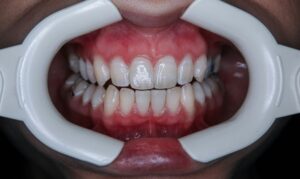Walking is one of the simplest, most accessible forms of exercise with numerous health benefits. From aiding digestion to enhancing mental clarity, walking can improve physical and mental well-being in many ways. But a common question arises: should you go for a walk right after eating? For many, the idea of walking after a meal is appealing, as it seems to aid in digestion and prevent that sluggish post-meal feeling. However, there are also some concerns, such as discomfort or digestive issues. In this article, we’ll dive into the science behind post-meal walking, examining its benefits, possible downsides, and tips for safely incorporating a gentle walk after meals.
The Benefits of Walking After Eating
Walking after a meal, especially a light and gentle stroll, can bring several health benefits. Post-meal walks are commonly practiced in several cultures, particularly in Mediterranean regions, where they’re part of a lifestyle associated with longevity and well-being. Research supports that taking a light walk after eating can positively impact blood sugar control, digestion, mental clarity, and even weight management.
1. Helps Regulate Blood Sugar Levels
One of the most significant benefits of a post-meal walk is its impact on blood sugar levels. After eating, blood sugar levels naturally rise as the body digests and absorbs nutrients. For people with diabetes, prediabetes, or insulin resistance, this post-meal blood sugar spike can be a concern. Studies have shown that walking after eating can help moderate blood sugar levels by promoting glucose uptake by muscles, which reduces the amount of glucose circulating in the bloodstream.
When you walk after a meal, your muscles utilize some of the glucose that has just entered the bloodstream, leading to a more gradual increase in blood sugar rather than a sharp spike. In fact, a brief 10-15 minute walk after each meal has been shown to lower blood sugar spikes and improve insulin sensitivity. This simple practice can be particularly beneficial for those with metabolic conditions, as it can reduce the risk of blood sugar fluctuations and the associated health complications.
2. Aids Digestion and Reduces Bloating
Walking after a meal can stimulate digestive enzymes and promote better gastric motility, the process that moves food through the digestive tract. A light walk helps stimulate peristalsis, which is the wave-like contraction of muscles in the gastrointestinal tract that aids in digestion. This process can relieve bloating and prevent uncomfortable post-meal symptoms, such as gas and acid reflux, by ensuring that food moves through the digestive system smoothly.
Walking can also help with gastric emptying, or the rate at which the stomach empties its contents into the intestines. When food sits too long in the stomach, it can lead to discomfort, bloating, and feelings of fullness. Studies show that gentle post-meal movement, such as walking, promotes gastric emptying, reducing bloating and making digestion more efficient. However, it’s important to keep the walk slow and relaxed to avoid potential discomfort, as intense activity can actually hinder digestion by redirecting blood flow away from the digestive organs.
3. Supports Weight Management
Walking after a meal can also support weight management by helping burn calories and preventing the urge to overeat. Many people experience food cravings or a desire to snack after meals, even if they’ve had a sufficient amount to eat. Taking a walk after eating provides a healthy distraction from post-meal cravings and offers a way to manage portion sizes effectively.
Additionally, a light walk after a meal can boost metabolism, helping the body use calories more efficiently. Consistently incorporating short post-meal walks can contribute to weight maintenance and prevent unwanted weight gain. While walking alone isn’t a weight loss miracle, combining it with mindful eating and balanced nutrition can be part of a sustainable weight management strategy.
4. Enhances Mood and Mental Clarity
Walking after eating doesn’t just benefit the body; it also positively affects the mind. Post-meal walks, particularly outdoors, expose you to fresh air and natural light, both of which are known to enhance mood and reduce stress. Exercise, even in moderate amounts, releases endorphins—often called “feel-good hormones”—that help elevate mood and increase energy levels. A gentle walk can clear mental fog and combat the sluggish feeling often experienced after a large meal.
For those who experience fatigue or sleepiness after eating, taking a brief walk can provide a natural energy boost. Post-meal drowsiness, known as “postprandial somnolence,” occurs because the body redirects energy to digestion, which can cause mental fog. A short, gentle walk helps counteract this effect by increasing blood flow and oxygen delivery, leading to improved mental clarity and alertness.
Potential Downsides of Walking Right After Eating
While post-meal walking has clear benefits, some people may experience discomfort or find that walking immediately after eating doesn’t suit them. Digestive discomfort, cramps, or acid reflux are some potential drawbacks that can arise if post-meal walks are too intense or start too soon after a large meal. Understanding these possible downsides can help you adjust your approach to post-meal walking to ensure it remains comfortable and beneficial.
1. Can Cause Digestive Discomfort
After eating, the body directs blood flow to the stomach and intestines to aid digestion. If you begin physical activity immediately, especially if it’s intense, it can interfere with this process. Instead of facilitating digestion, a vigorous walk may pull blood away from the stomach, leading to indigestion, cramps, or discomfort. This is why it’s best to keep post-meal walks slow and gentle, allowing the body to prioritize digestion without overwhelming it.
Starting a post-meal walk immediately after eating a very large or heavy meal may also increase the likelihood of acid reflux, as food can shift in the stomach and increase pressure on the lower esophageal sphincter, allowing stomach acid to move upwards. To avoid this, wait about 10-15 minutes after a large meal before heading out, and keep the walk light and relaxed to prevent triggering reflux.
2. Potential for Fatigue or Drowsiness
While post-meal walking can help combat sleepiness for some, others may experience fatigue if they’re unaccustomed to post-meal activity. After eating, the body naturally enters a “rest-and-digest” state, especially after a carbohydrate-rich meal, which can promote drowsiness. For some individuals, even light exercise during this period might feel challenging or counterproductive.
If walking right after a meal feels draining or uncomfortable, it may be worth experimenting with timing. Waiting 15-30 minutes after eating before starting a walk could allow digestion to initiate without excessive energy demands, ensuring a more comfortable experience. For those sensitive to post-meal fatigue, shorter walks or evening strolls might be more suitable.
3. May Not Suit All Digestive Health Conditions
Not all digestive health conditions benefit from post-meal movement, and in some cases, walking right after eating may worsen symptoms. For example, individuals with irritable bowel syndrome (IBS) or gastritis might find that post-meal walking exacerbates discomfort or pain. These conditions can be sensitive to movement and pressure in the abdominal area, making immediate activity uncomfortable.
In such cases, it’s important to tailor post-meal habits to individual needs. For some with digestive sensitivities, seated relaxation or deep breathing might be more beneficial right after eating, followed by light activity later. Experimenting with timing and intensity is key, and consulting a healthcare provider for personalized advice is always recommended for those with chronic digestive issues.
Best Practices for Post-Meal Walking
If you decide to incorporate post-meal walking into your routine, there are a few tips to ensure you get the most out of it. These best practices can help make walking after eating a comfortable and enjoyable habit, optimizing both the physical and mental benefits without causing discomfort.
1. Keep the Walk Light and Gentle
For a post-meal walk to aid digestion and blood sugar control without causing discomfort, keep the pace gentle and the intensity low. A 10-15 minute leisurely stroll is generally enough to experience benefits without overwhelming the digestive process. Intense activities like running or brisk walking can divert blood flow away from the stomach, which can be counterproductive.
The goal is to walk at a relaxed pace, enough to get moving but not so fast that it feels strenuous. This approach is effective in balancing blood sugar levels, enhancing digestion, and providing a mood boost without risking cramping or acid reflux. Keeping the walk short and gentle allows it to be a sustainable habit that fits easily into a daily routine.
2. Time the Walk Appropriately
While walking right after eating is generally safe for many, timing can vary depending on the meal size and type. After a large meal, waiting 10-15 minutes before beginning a walk can help reduce the risk of digestive discomfort. For smaller meals or snacks, walking can usually begin immediately without issues. The timing of post-meal walks can be adjusted based on individual comfort levels and meal composition.
Those who experience acid reflux or indigestion may benefit from waiting a bit longer, especially after high-fat or high-protein meals, which take longer to digest. Paying attention to your body’s response can help you determine the best timing, ensuring that each walk supports digestion and doesn’t lead to discomfort.
3. Incorporate Post-Meal Walking into Your Daily Routine
Incorporating post-meal walks into your daily routine can make a noticeable difference in blood sugar control, digestion, and mental clarity. Try making post-meal walks a regular part of your schedule, whether it’s after breakfast, lunch, or dinner. If possible, plan your meals with a walk in mind to create a consistent routine that supports long-term health.
For those with busy schedules, even short walks can fit seamlessly into the day. For example, taking a few laps around your office building after lunch or a quick stroll around the block after dinner can become enjoyable habits. By incorporating post-meal walks consistently, you can optimize their benefits and turn a simple practice into a long-term health strategy.
Conclusion
Walking after eating offers a range of health benefits, from regulating blood sugar levels and aiding digestion to improving mood and mental clarity. However, as with any activity, individual responses vary, and factors like meal size, personal health conditions, and timing can impact how comfortable post-meal walking feels. For most, a gentle, short stroll is a safe and effective way to support digestion and enhance energy levels after meals.
The key is to listen to your body and start with light, short walks that fit into your daily schedule. With mindful timing and intensity, a post-meal walk can become a valuable addition to a health-conscious lifestyle, contributing to better blood sugar control, digestion, and overall well-being.




